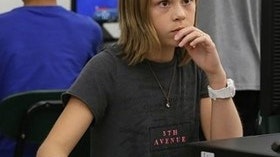Homepage
•
Learning Library
•
Blog
•
3 steps to creating student design teams
Expand breadcrumbs
Expand breadcrumbs
- Learning Library
- Blog
- 3 steps to creating student design teams
- Homepage
- •
- Learning Library
- •
- Blog
- •
- 3 steps to creating student design teams
3 steps to creating student design teams
By Nicole Krueger
May 8, 2017








